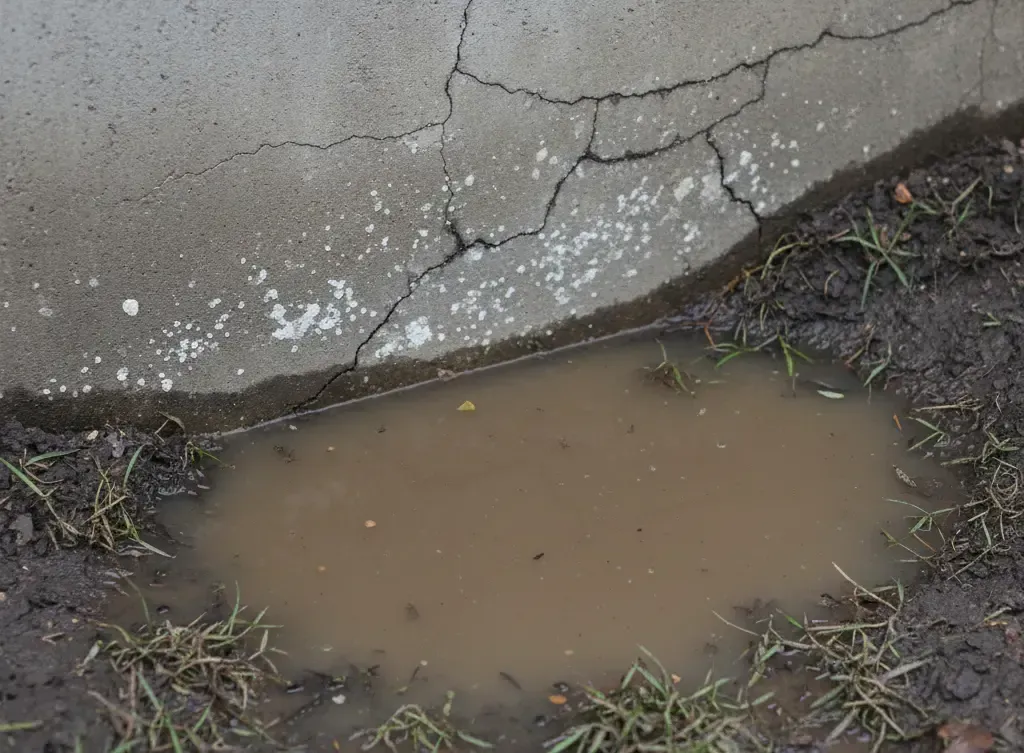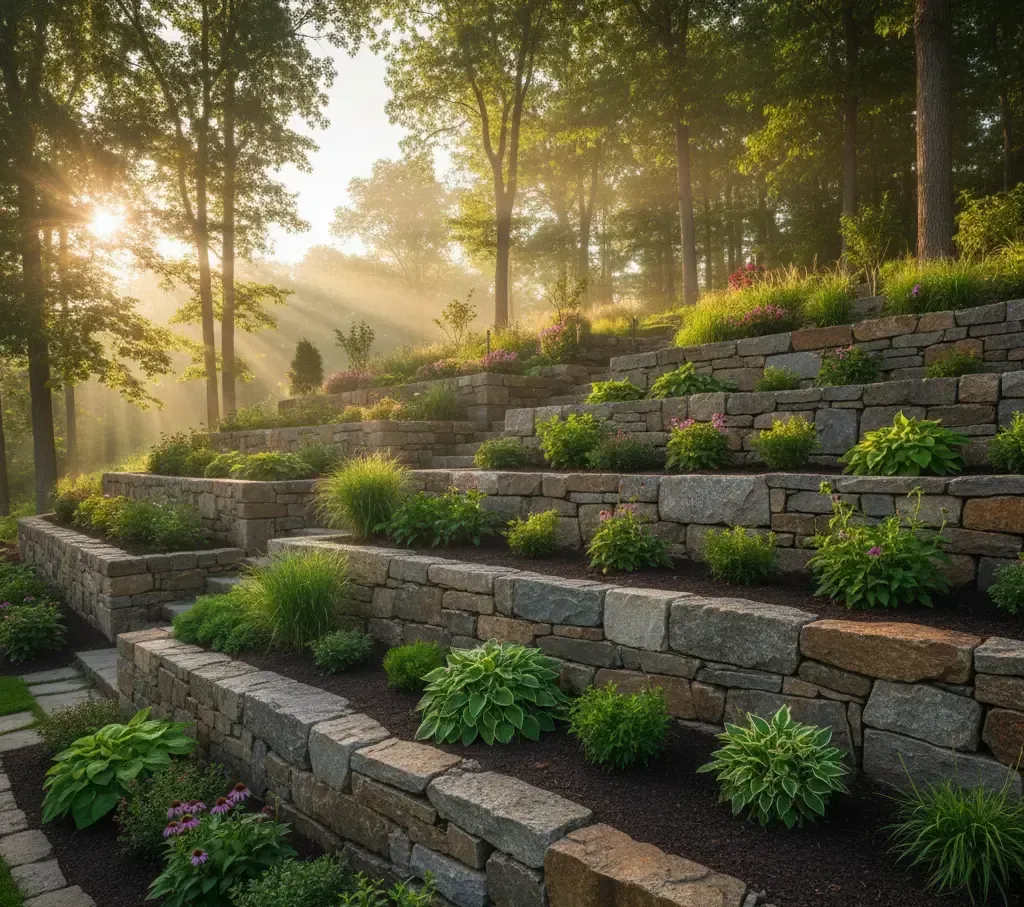Is Your Yard's Slope a Problem? A Definitive Guide to Proper Land Grading Solutions
Imagine rain pouring down after a storm. Water gathers near your home's base. It seeps into cracks. Over time, this leads to foundation cracks and costly repairs. You might face thousands in fixes. Poor yard slopes cause these issues. Land grading shapes the ground to direct water away. This guide helps you spot slope problems. It shows fixes for proper land grading.
Diagnosing the Problem: Identifying Poor Land Grading Indicators

Spotting bad land grading early saves money. Look for clear signs in your yard. These clues point to water flow troubles.
Water Pooling and Drainage Failures Near Structures
Water stands in low spots by your house. This builds pressure against walls. It pushes moisture inside. Cracks form in the base. Basements flood fast. Check during rain. Watch if puddles form near doors or walls. If water lingers over an hour, act now. The American Society of Home Inspectors notes this causes most home water damage.
- Walk your yard after rain.
- Note spots where water collects.
- Mark areas close to the foundation.
Fix it soon. Standing water weakens concrete. It invites mold growth too.
Erosion Patterns and Soil Loss
Soil washes away in channels. Small rills appear on slopes. Gullies deepen over years. Tree roots show bare. This strips topsoil. Plants struggle to grow. Your yard looks patchy. Erosion speeds up on steep grades. The USDA says it removes up to 10 tons of soil per acre yearly in bad cases.
Look for:
- Bare dirt patches.
- Washed-out paths.
- Mud on sidewalks after storms.
These signs mean water flows wrong. Soil loss harms your landscape base.
Unlevel Yards and Visible Slope Changes
Ground tilts toward the house. This is a negative grade. It pulls water in. Or, yard looks stepped and odd. Uneven spots trip you. Grass dies in dips. Experts recommend a 5% slope away from home for the first 10 feet. Measure with a level tool. Drop six inches over that distance.
Common views include:
- Driveways sloping inward.
- Patios with water traps.
- Borders hugging the wall.
If your yard fails this test, grading needs work. It protects your home's structure.
The Science of Slope: Understanding Proper Grading Principles
Grading follows basic rules. It manages water on the surface. Learn these to fix your yard right.
The Critical Role of Positive Drainage
Positive drainage sends water away. It slopes ground from the house. Aim for a six-inch drop in 10 feet. This keeps moisture off walls. Water runs to safe spots. Like a roof gutter, it guides flow. Bad slopes reverse this. They trap rain near footings.
Key facts:
- First 10 feet matter most.
- Use a string line to check grade.
- Adjust for flat lots too.
This setup cuts flood risk by half, per drainage studies.
Separation of Surface Water and Groundwater
Surface water flows over ground. Groundwater sits deeper. Grading handles the top layer. It directs rain to drains. Deeper issues need French drains. These pipes catch water below soil. But surface grade comes first. It stops overload on those systems.
Think of it this way. Surface runoff is like street rain. Groundwater is like a hidden spring. Mix them wrong, and basements suffer. Pros say 80% of water problems start at the surface.
Utilizing Grade Breaks and Swales Correctly
Grade breaks shift slopes. They create tiers on hills. Swales are shallow dips. They channel water to curbs. Berms raise edges to block flow. Use them to steer rain. Avoid letting water pool or rush.
Steps to plan:
- Map your yard's high and low points.
- Dig swales 1-2 feet wide.
- Line with gravel for better flow.
Done right, these tools keep soil stable. They prevent yard washouts.
Need a Clearer Picture of Your Drainage Issues?
Let our experts provide a free, no-obligation assessment of your yard's slope and water flow.
The Science of Slope: Understanding Proper Grading Principles
Grading follows basic rules. It manages water on the surface. Learn these to fix your yard right.
The Critical Role of Positive Drainage
Positive drainage sends water away. It slopes ground from the house. Aim for a six-inch drop in 10 feet. This keeps moisture off walls. Water runs to safe spots. Like a roof gutter, it guides flow. Bad slopes reverse this. They trap rain near footings.
Key facts:
- First 10 feet matter most.
- Use a string line to check grade.
- Adjust for flat lots too.
This setup cuts flood risk by half, per drainage studies.
Separation of Surface Water and Groundwater
Surface water flows over ground. Groundwater sits deeper. Grading handles the top layer. It directs rain to drains. Deeper issues need French drains. These pipes catch water below soil. But surface grade comes first. It stops overload on those systems.
Think of it this way. Surface runoff is like street rain. Groundwater is like a hidden spring. Mix them wrong, and basements suffer. Pros say 80% of water problems start at the surface.
Utilizing Grade Breaks and Swales Correctly
Grade breaks shift slopes. They create tiers on hills. Swales are shallow dips. They channel water to curbs. Berms raise edges to block flow. Use them to steer rain. Avoid letting water pool or rush.
Steps to plan:
- Map your yard's high and low points.
- Dig swales 1-2 feet wide.
- Line with gravel for better flow.
Done right, these tools keep soil stable. They prevent yard washouts.
Land Grading Solutions: From Minor Adjustments to Major Overhauls

Fixes range from simple to big jobs. Start small if possible. Call pros for tough cases. Proper land grading restores safe slopes.
Minor Adjustments: Resloping and Soil Compaction Techniques
Add soil to low areas. Remove from high spots. This evens the grade. Compact new dirt with a tamper. It stops sinking later. Match soil type to your yard. Blend it smooth.
How to do it:
- Rent a tiller for loose soil.
- Add two inches at a time.
- Water and roll for firmness.
These steps fix mild issues. They cost under $500 for small yards.
Implementing Surface Water Diversion Systems
Divert water with tools. Catch basins grab puddles. Channel drains line paths. Extend downspouts far out. They pipe rain to dry areas. Keep water off concrete pads.
Options include:
- Plastic trench grates.
- Metal gutter extensions.
- Pop-up emitters in lawns.
Install them along edges. This cuts erosion near walks. Many homes see less flooding right away.
Major Regrading Projects and Retaining Wall Integration
Steep yards need full reshape. Bring in machines for cuts. Build terraces for flat space. Retaining walls hold back soil. Use stone or blocks. They create stable levels.
Process outline:
- Survey the lot.
- Haul away excess dirt.
- Set walls with gravel base.
For slopes over 30%, walls are key. They prevent slides. Projects run $5,000 to $20,000, but last decades.
Material Selection and Long-Term Landscape Stability
Pick good stuff for grades. It holds up over time. Plants and care keep it strong.
Choosing the Right Fill Material for Longevity
Topsoil grows plants. Fill dirt builds bulk. Aggregate drains fast. Use clean, sand-free dirt. It packs tight without lumps. Avoid clay that holds water.
Best picks:
- Screened loam for top layers.
- Gravel mix for bases.
- Test for pH balance.
Quality fill resists rain wash. It saves on future fixes.
Vegetation as a Natural Erosion Control Barrier
Plants lock soil in place. Deep roots grab dirt. Native grasses spread quick. Shrubs add density. Groundcovers fill gaps.
Plant tips:
- Sow seeds on new slopes.
- Water weekly at first.
- Choose locals like fescue or clover.
Roots slow water speed. They cut soil loss by 70%, say soil experts. Your yard stays green and firm.
Maintenance Protocols for Sustained Grading Effectiveness
C
heck grades yearly. Clear debris from swales. Watch for sinks near pipes. Trim plants that push soil. Re-seed bare spots.
Routine tasks:
- Inspect after big rains.
- Clean drain screens.
- Add mulch to hold moisture.
These habits keep your work solid. They spot issues early.
Investing in Grade for Lasting Property Protection
Proper land grading guards your home. It stops water damage to foundations. You avoid floods and erosion. This isn't just looks. It's key upkeep for your biggest asset. Spot signs like pooling or gullies. Apply fixes from small reslopes to full regrades. Use right materials and plants for staying power. Maintain it to last.
If your yard's slope seems off, talk to a drainage expert. Get a site check. Protect your property now.
Stop Water Damage Before It Costs You Thousands.
Secure your property's foundation and value with a professional grading solution tailored to your yard.
